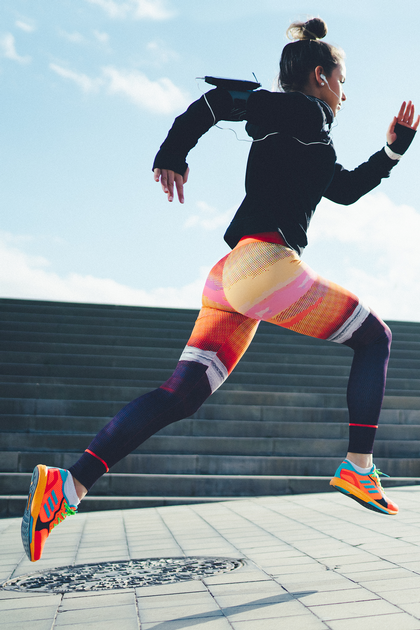
Strong posterior muscles increase your running efficiency
Foto: iStock.com/martin-dm
If you use the posterior leg muscle chain correctly while jogging, you can not only gain speed, but also practice injury prevention.
This article is brought to you by Medical Running
For runners, the balance between the posterior and anterior thigh muscles is essential to preventing injuries. Most pulled muscles occur in the posterior muscle compartment (ischiocrural muscles) and can be avoided. When you increase your speed, run for too long, or run downhill, the posterior thigh muscles frequently become overloaded, thus leading to a pulled muscle or even torn muscle fibres.
The better these muscles work, the more energy efficient they are. When the foot strikes the ground, the gluteal muscles, above all the ischiocrural muscles, pull the leg backwards or the body forwards. This naturally requires the right posture: an upright spine and a slight lean forward. This enables the posterior chain to work optimally.
The ischiocrural muscles are often shortened and withered. A poor posture (kink in the hips and forward lean from the waist) can keep the posterior chain permanently overstretched and thus tense. If the focus is only placed on the anterior thigh muscles (quadriceps) during strength training, this will inevitably lead to an imbalance. Unfortunately, the importance of this posterior chain seems to be constantly forgotten.
The backward stride length is decisive
A lot of sitting can often put a spanner in the works. If you sit a lot, the front of your groin shortens and first needs to become more flexible. Stretching the leg backwards should only be done from the hip joint. The pelvis remains upright and the groin open. This relieves the lower back. Flexibility is a basic prerequisite for gaining strength.
In the running motion, the foot’s strike, push through under the body and push-off have to be performed in a straight line. The more powerful the movement, the better the propulsion. The foot is placed directly beneath the body (Figure 1). The ischiocrural muscles then start to take effect when pushing through (Figure 2-3). Until the «toe off», the leg is fully extended backwards (Figure 4). The hip and knee should be stretched at the end of the movement. The posture remains upright and with the necessary forward lean. Strengthening the ischiocrural muscles contributes significantly to optimising your running style.
This may be of interest for you too


